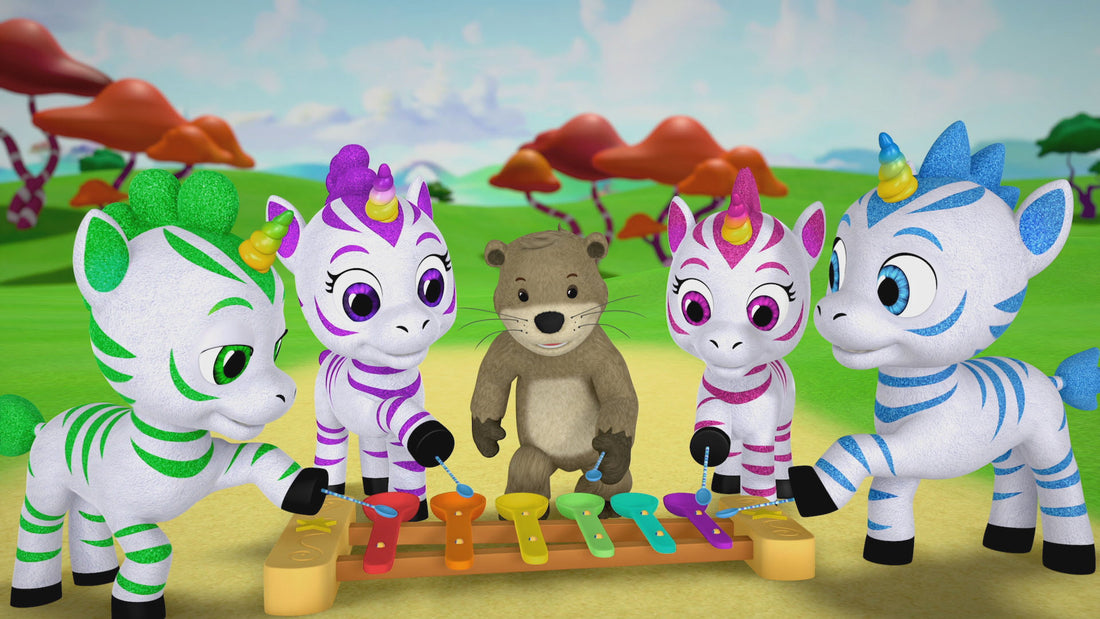
Reading Verbal and Non-Verbal Communication Cues
Written by Natascha Crandall, PhD. - Educational Curriculum Consultant

Receptive language - the ability to understand language and words in nonverbal, verbal, and written format – is a fundamental part of child development. It is the foundation for social and academic success. When a child understands instruction and can use their expressive language to communicate with peers, they’re more likely to succeed in life. And, for us parents, it makes our lives easier… a LOT easier.
It’s natural that our children are more likely to listen to a voice that sounds warm and encouraging than to one that sounds harsh and judgmental. As adults, we react in the exact same way! In fact, the nonverbal tone is what children learned to react to first. An infant that hears a loud or harsh tone reacts with a startle, and a parent knows that a way to calm a child is with a hug and a soothing tone of voice. They have learned that a caring and inviting tone communicates our desire to have an atmosphere of acceptance, love, and respect.
As children develop language skills, words start to take precedence and their meaning carries more weight. What you say is what you mean- they pick up on tone but aren’t yet able to pick up on suggestions, or sarcasm, or other nuances that rise to the surface when a person says one thing, but may mean something else.
As children get older, they grow more sensitive to the world around them. They are aware of tone and become very conscious of when someone is serious and when someone is playful. They are often likely to pick up on how words are said rather than the words themselves. Children start to learn that there are differences, and this usually comes down to tone and how well they know the person.
Tone of voice, volume and, of course, the words themselves, all matter. Each must be interpreted and processed in the developing mind. Even if the words are well intended, it can be the volume or the tone of the message that they hear. Some children become anxious, while others become fearful when they are shouted at. Voices raised in frustration or anger can do as much emotional harm as a raised hand inflicts physical pain.
As children are figuring out how to decipher nuance in communication, they also need to learn to differentiate between what was said or done as opposed to why something was said or done. Consider if someone is yelling "get away!" Is this because they don't like you or because there is danger present and they do care about you? Everything is in context. It is the tone, words, and the emotion behind it that really gives you to the total package of what is being communicated.
At Zoonicorn, we are always mindful of how our characters express themselves both verbally and nonverbally. A great example of this is our upcoming episode “I Can’t Heeeear You,” when the Zoonicorns lose their voices and Pancake must learn to hear with his eyes as well as his ears. As young children watch our episodes - and discover the social emotional fundamentals of optimism, determination, and resilience - they are able to observe how the characters convey and respond to a range of communications cues.
Effective communication is more than choosing the right words. As parents and caregivers, we must remember to give equal attention to actions like body movements and facial expressions, and make sure they support the message we wish to convey. Children are very sensitive to the alignment of a message's verbal and nonverbal components. Whatever is being said can be lost in translation if the person you're speaking to senses what you are saying isn't matched by your tone of voice and other nonverbal cues like facial expressions. In instances where these components do not match up, children often view the nonverbal message as more authentic.
